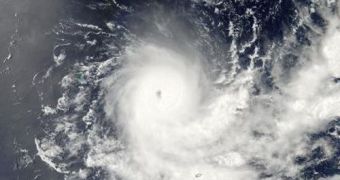Scientists have recently managed to develop a new model for predicting hurricanes, and the data does not look encouraging. Considering that the world is getting warmer, the amount of damage that the new storms could cause is larger than what has currently been witnessed. Meteorologists say that, over the next decades, we could expect to see a surge and the intensity and lives of hurricanes, as the tropical storms will pick up more power from water and clouds, to form larger and more threatening weather events. The number of such storms is also poised to grow considerably, experts warn.
Specialists say that there are two main factors that determine the formation and strength of hurricanes, and these are ocean water temperatures and latitude at which the storm forms. The amount of heat in the water determined the updraft that initially triggers the formation of the atmospheric event, whereas the latitude determined the strength of the Coriolis Force, which dictates the initial vorticity of each hurricane. Experts say that this particular force is the main reason why tropical storms rotate in different directions in each hemisphere, and also why these events never form at the equator.
Experts at the George Mason University in Washington DC, led by physicist Robert Ehrlich, believe they may have found a way of accounting for the probable number of storms in store for us over the coming years by using these two variables alone. The team says that these values are sufficient for their model, and that no other variables are required. The new, elegant calculations include data collected between 1960 and 2007, and that the temperatures taken into account exceed a threshold of 25.5 degrees Celsius. Details of their work appear in the online journal arXiv.
The creators of the new model admit, however, that a lot of work remains to be done on this issue. They say that one thing that hinders their research is the fact that the number of hurricanes in the Atlantic Ocean appears to be decreasing lately, whereas the Pacific still produces large amounts of storm. Theoretically, this shouldn't be the case if water temperatures at both locations increased by the same amount, a fact that was verified through direct measurements. Such discrepancy would seem to indicate that other factors are at work in dictating the frequency of hurricanes, which is something that the new model does not include.

 14 DAY TRIAL //
14 DAY TRIAL //